Tuareg tribe: the African blue men of Sahara
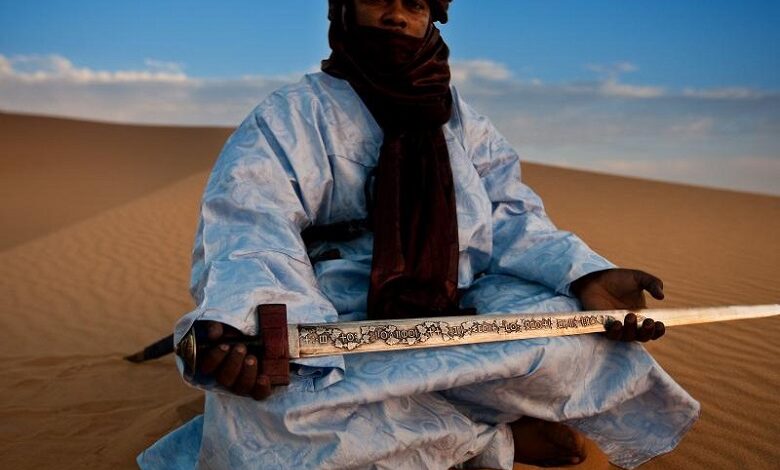
The Tuareg (Tuareg), is a Berber nomadic people of central and southern Sahara in the Sahel region of West Africa. The name “Tuareg” is Arabic and apparently means “wanderer”. In their language, they are called Imuhaɣ (Imuhaɣ).
Rebels from the radical Islamic Movement for Oneness and Jihad in West Africa (MUJAO) had expelled the last Tuareg fighters from Menaka in northern Mali. The Tuareg, a desert people, fight in Mali against the Islamists to establish their state.
They have lived in the Sahara for millennia and were the most influential people in North Africa before colonial times. Their population reaches about 1,200,000 throughout their range, including states by population range: Niger, Mali, Burkina Faso, Algeria, Libya.

No one knows precisely where the Tuareg came from or when they settled in the Sahara. They are likely descended from the Berbers and have lived in the area for several millennia, as the Greek historian Herodotus mentioned the Tuareg’s existence in the 5th century BC.
Their name probably derives from Targa, the Berber name for the Libyan province of Fezzan. Since then, as nomadic people, they have traveled through an area nowadays formed by Mali and Niger and parts of Algeria and Libya.
The life of the Tuareg
Traditions of Tuareg
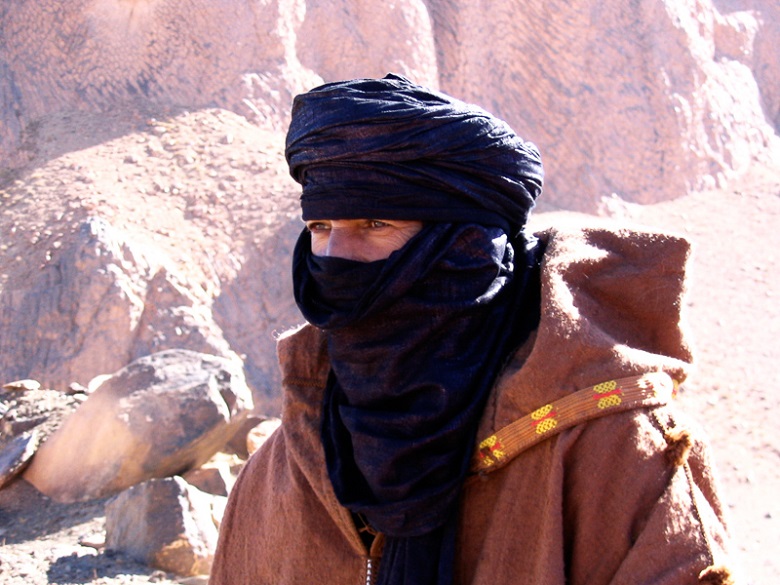
In the Tuareg, the rule of covering the face imposed by Islam is reversed, so that it is the men who cover their faces, leaving only the eye area uncovered, as opposed to the women who do not.
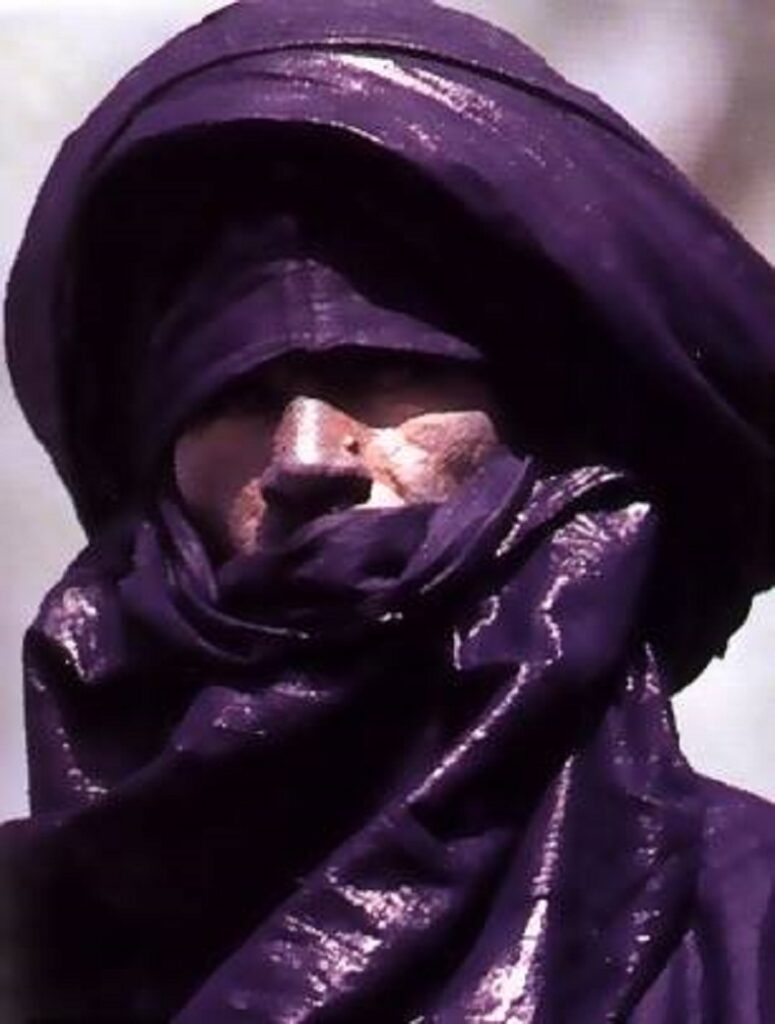
This serves not only for reasons of observing traditions, but also to protect them in their travels from the sandstorms that mow the Sahara, but it is also a “thermal insulation” solution against the unbearable heat and the scorching desert sun, however alien this may seem to Europeans. They are also called blue people because, over the years, their skin begins to stain when they often wear clothing dyed in the characteristic lulac color.
Religion

They are Muslim Sunnis (loose Muslims) in religion but retain many pre-Islamic customs and traditions, such as the many amulets they wear, especially the women.
Camels
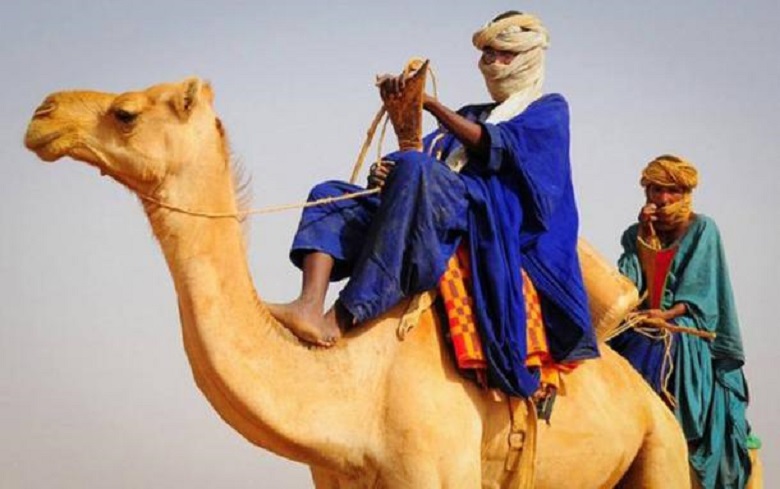
The arrival of camels made it possible for the Tuareg to travel great distances in the desert. The first of these animals were introduced to North Africa by the Arabs about 2,000 years ago. The Tuareg took over the animals and raised large herds of camels, allowing them to expand their territories in the early centuries after the beginning of the Christian era.
In the 4th or 5th century, the exact period is unknown; the Tuareg under the legendary Queen Tin Hinan moved south to the Sahel, where they encountered several other peoples.
Tuareg slave trade
In the Middle Ages, the Tuareg reached the height of their power and prosperity. Their society at the time was highly hierarchical, with a noble class making their money in trade, while the lower levels had a more sedimentary existence as peasants.
From the 10th century onwards, they controlled the caravan routes through the Sahara for centuries. The Tuareg played a significant role in the slave trade, transporting slaves from West Africa through the desert to the Mediterranean coast. These slaves were then sold to the Europeans and Arabs. In addition to slaves, the caravans also transported, among other things, salt, gold, glass, spices, dates, and pottery.
Blue men

From that time on, the Tuareg came to be known as the “Blue Men of the Sahara,” or the “Veiled Men,” because of the indigo veils worn by the male Tuareg. Unlike many other Islamic groups, the Tuareg women did not wear veils.
Tuareg language
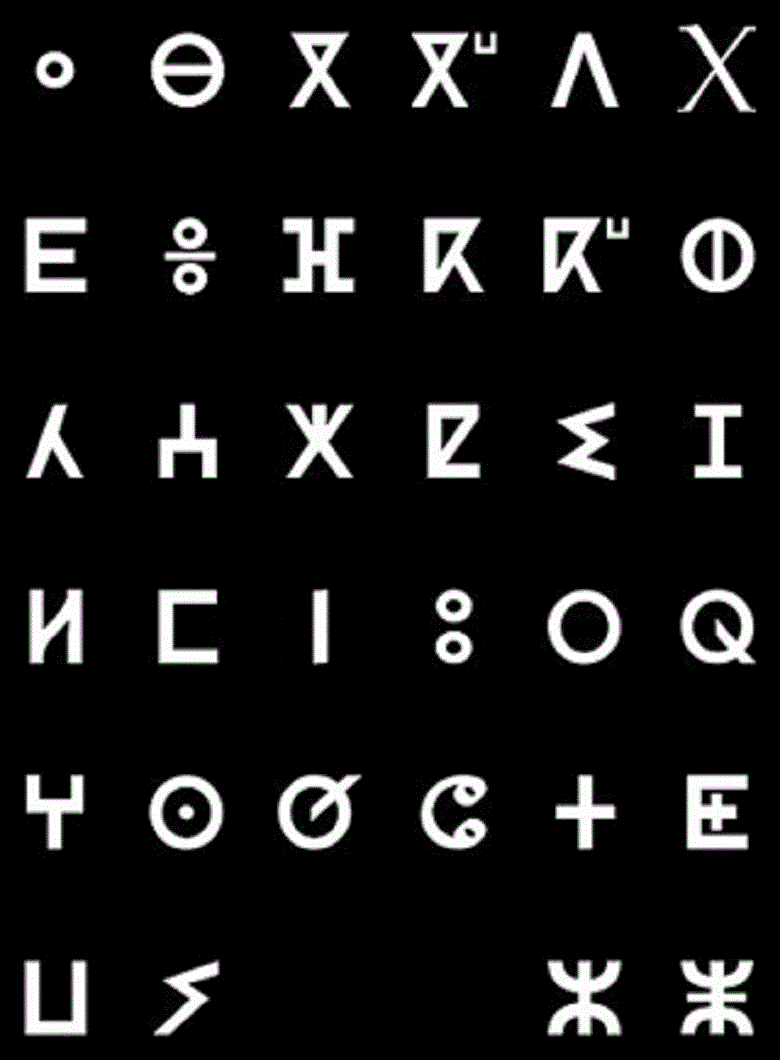
Their primary language is Tamashek, and this Berber language is based on the Tifinag script, which is also widely used by other Berbers in Algeria, Morocco, and Mauritania. Linguistically, it belongs to the Afro-Asiatic family to which the different Berber dialects belong.
Colonial times
In the late nineteenth century, the power of the Tuareg came to an end. With their broadswords, they were no match for the French’s guns and became one of the last North African peoples to submit to the French Empire. Despite this surrender, they continued to fight against the French for a long time, but at the beginning of the 20th century, the Tuareg force made treaties and curtail their nomadic lifestyle.
Decolonization
After decolonization in the 1960s, the Tuareg area divides into several new states. Most Tuareg came to live in Niger and Mali, where they rebelled several times against the new governments. Most of the resistance came to an end in the 1990s, but violence has flared up again in the past year.
From October 2011, the Tuareg are trying to establish their state in northern Mali with the National Movement for Liberation of Azawad. After the declaration of an independent Azawad on April 6, 2012, the Tuareg got into conflict with various Islamic groups and lost many of their areas in Northern Mali, including the town of Menaka, to MUJAO.




